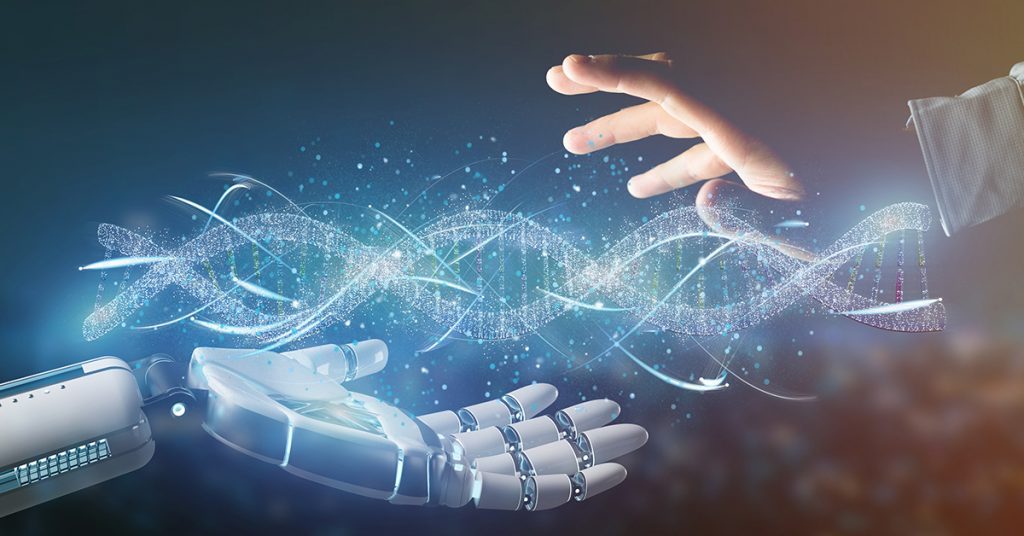Some fear the apocalypse, but the reality could be much more positive.
Artificial Intelligence increases workplace efficiency, relieves us from the most mundane of tasks, and helps us achieve the best business results. But have you ever wondered if AI could make us safer? If not, now’s the time — let’s explore what AI can do for our safety.
Technology fails… but no more often than people.
There’s one thing we need to be clear on from the outset.
100% fail-safes, in any form, do not exist. People fail. And yes, technology can fail as well. In the history of the world, we can find just about any situation in which technology has, at some point, failed.
The story’s no different for Artificial Intelligence.
Take a fatal car crash in March 2019, involving a Tesla Model X equipped with semi-autonomous driver-assistance.
Police confirmed that 50-year-old Jeremy Beren Banner died while using the Autopilot system. Worse, the National Transportation Safety Board verified that the driver had turned on Autopilot just 10 seconds before the accident happened — while the Model X had failed to detect the driver’s hands on the steering wheel.
On Tesla’s part, the company regularly reminds drivers that they must supervise Autopilot at all times. Moreover, Tesla claims that most of the serious accidents involving its Autopilot system are actually the result of ‘driver distraction.’
See also: Can Self-Driving Cars Keep Us Safe?
Still, it seems technology is failing us — again. However.
- According to the World Health Organisation, more than 1.25m people die each year as a result of road traffic accidents;
- While an additional 20-50 million are injured or disabled.
….whereas the total number of accidents involving cars that use AI technology is much lower than those caused by humans. Meaning?
Meaning we need to re-consider whether machines that use AI really do pose a greater threat to our safety than we pose to ourselves? Google thinks not. Its autonomous cars claim to be “10x safer than the best drivers,” and “40x safer than teenagers” — so the question is, ‘Why aren’t we prepared to trust technology?’
As with any new tech, there will always be the fear factor.
Just revisit the early days of air travel where operators endured terrible tragedies because the technology was evolving. Fast forward to today: statistically, air travel is the safest mode of transport around.
6 ways Artificial Intelligence can make us safer.
Research shows that Artificial Intelligence is better than people at tackling various complex tasks. As such, we can harness AI to make us safer by taking the risk of human error out of the equation — and use it for the following tasks:
1. Enhancing cybersecurity and data protection
Cybersecurity is one of the greatest challenges of our time. New malware appears every few seconds, and anyone responsible for IT security knows that information security must now be assessed through a ‘prism of risk.’
Some believe it has become impossible to protect our devices, systems, and data against every possible threat. Even Brian Dye, vice president of Symantec — a leading antivirus software developer — recently said, “It’s time to retire.”
Retire because modern malware is smart. It can learn as it goes, and use AI to coordinate cyberattacks. But how can companies respond? There’s only one way.
They must fight AI with AI. It’s not a surprise that many businesses first foray into the world of artificial intelligence is cybersecurity-related — as today, mechanisms that use AI (and tools that automate the prevention of cyberattacks) are the most effective.
Take the 2017 example where researchers from MIT’s Computer Science and Artificial Intelligence Laboratory (CSAIL) created a cyber-security monitoring system to scan 3.6 billion lines of code per day, purely to find errors and intrusions.
These are the types of AI mechanisms that make us safer: ones that can identify patterns and anomalies at scale, alerting us to cyber-attacks, then blocking the threat before it gets the chance to take hold.
Artificial Intelligence — and related solutions, like Machine Learning — give us the chance to fight back against the hackers; the chance to win (or, at least, to reduce the potency of the threat!).
2. Reducing human error
The human element is a crucial consideration in workplace safety.
We can’t hide from the fact: fatigue and stress contribute to many accidents. Therefore, one of the key advantages of AI is its ability to stay alert, focused, and relaxed at all times.
Elsewhere, complex AI algorithms can help finance and accounting professionals carry out their day jobs, reducing manual work so they can focus on more important tasks — freeing headspace to not only minimize error rate but to improve efficiencies as well.
AI could have an equally positive impact on employee job satisfaction: imagine the effect of automating routine tasks, giving your team more time to work on exciting projects that inspire and motivate, in turn helping a business grow and succeed.
See also: How to Increase Accounting Efficiency Using AI Invoice Automation
3. Improving road safety
As we mentioned at the start, vehicles that use AI can improve road safety.
They can mitigate human error behind the wheel; remind human operators to drive more safely; suggest we take every precaution where necessary. Moreover, AI can help identify, and as a result, reduce dangerous situations, even teaching us to drive with more care.
Take modern cars that use AI-driven solutions to:
- Remind drivers to follow specific traffic rules
- Maintain a safe distance between other vehicles
- Drive in the correct lane
Yet, examples of using Artificial Intelligence to improve road safety don’t end there.
Professor Simon Washington of the University of Queensland, Australia, combined video analysis with Artificial Intelligence, Deep Learning, and advanced econometrics to explore and identify interactions between road users.
He made algorithms that analyze crash risks, accounting for the interactions between cars, pedestrians, and cyclists. The analysis allowed the software to extract data about the times and places where the risk of accidents was highest and figure out how to improve road safety and avoid accidents in the future.
Washington’s solution has been implemented in 20 cities across 8 countries: as it turns out, it has improved the safety of hundreds of once-dangerous intersections.
4. Supporting health protection and disease detection
AI is already used in complex tasks like drug discovery: it makes the whole process more efficient.
It also supports breakthroughs in medicine by helping doctors more precisely predict which methods and prevention strategies will work in which patient groups. It can even analyze outcomes based on individual genetic variability, the local climate, and a patient’s lifestyle.
Now, AI is improving the productivity of radiologists — let’s look at an example.
Researchers from Stanford developed an algorithm to assess chest X-rays for signs of disease. It can recognize up to 14 types of medical condition, with one particularly surprising result: it’s better at diagnosing pneumonia than several expert radiologists working together.
Today, hospitals are using solutions based on Machine Learning and Artificial Intelligence in various other ways, too. Take the Hospital of Montpellier in France.
It uses AI to analyze patient data, which allows for better management of patient visits. The system reviews both structured and unstructured data from medical records and doctors’ notes, creating an accurate and comprehensive health portrait of the patient, thus allowing for more effective patient service and faster diagnosis.
All told, AI is a handy medical tool — but we must remember: it can’t solve medical problems without human intervention. Medical care comes with tremendous responsibility.
See also: How Technology Can Improve the Medicine: Machine Learning Methods Used to Detect Cervical Cancer
Expert verification will always be a necessity.
5. Detecting crime
Many technologies can help police detect and fight crime. AI sits chiefly among them because it’s able to forecast when and where a crime will be committed, before the offense ever happens.
….but how’s that even possible?
Thanks to PredPol: a company that uses Big Data and Machine Learning to predict the time and place of a potential offense.
PredPol’s software analyzes existing data based on past crimes and predicts when and where the next crime is most likely to happen — and its system is successfully used in several cities across the US.
PredPol researchers have even demonstrated how a police patrol using PredPol’s solution can achieve a 7.4% reduction in crime rate.
6. Tightening border security
As a final application, AI can help tighten border controls and make gateways into your country more secure.
Let’s look at an example: a project called iBorderCtrl, tested by the Hungarian National Police across Hungary, Latvia, and Greece.
From September 2016 to August 2019, travelers were given an automated lie-detection test in which a virtual border control officer asked questions like:
- “What’s in your suitcase?”
- “If you open the suitcase and show me what is inside, will it confirm that your answers were true?”
The system used AI to record travelers’ faces and analyze 38 micro-gestures, scoring each answer. If a traveler passed, he got a QR code that allowed him to cross the border; if he failed, the virtual officer asked more questions.
Or, handed the traveler over to a human agent.
AI is as close to a fail-safe as we can get… but.
AI could soon impact every sector of our life.
It will improve our safety, but we have to remember: we cannot rely on an algorithm to protect us in every instance. In some cases, we will need to leave the final decision to a human.
Moreover, as we come to use AI more, we have to be careful to mitigate the risk of mistakes — and to avoid unintended, some might say apocalyptic, consequences.






